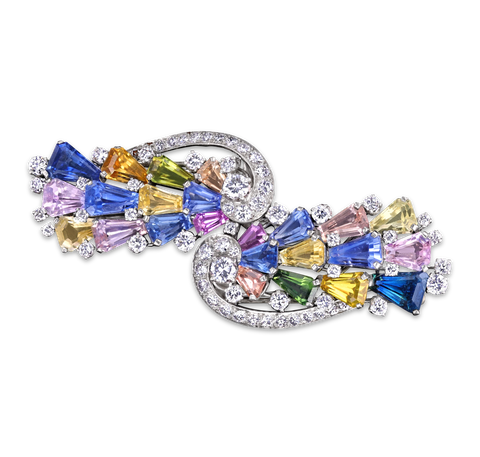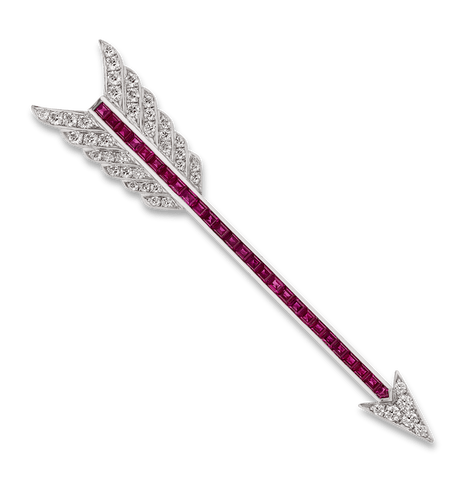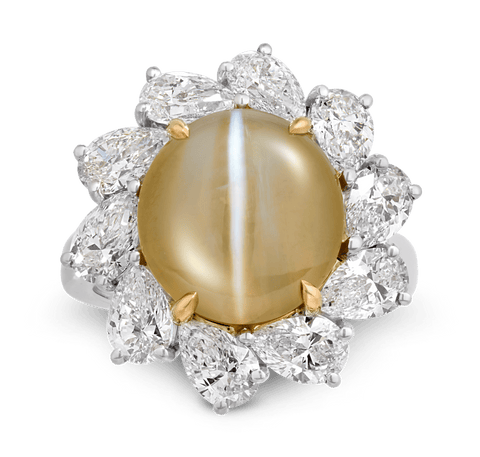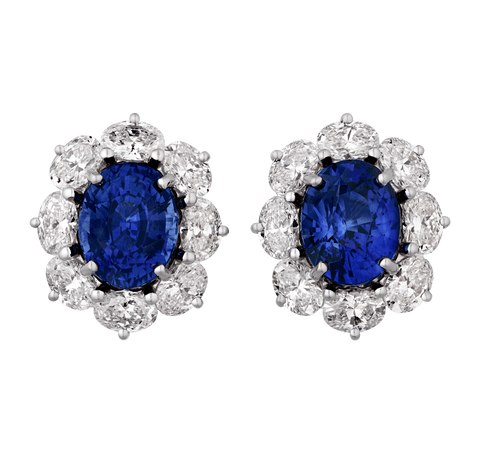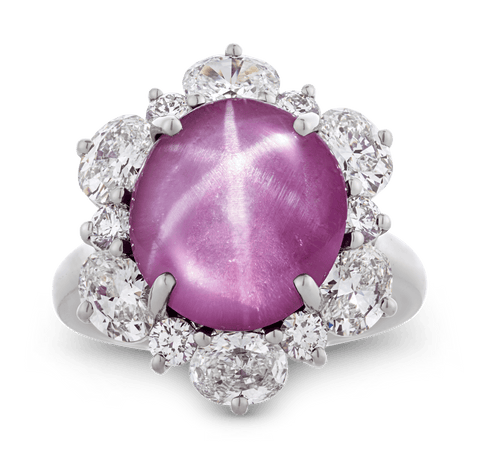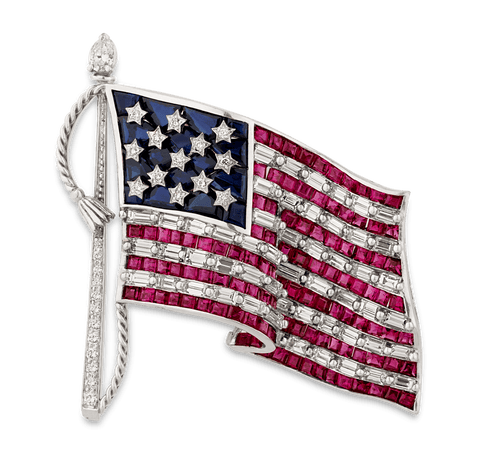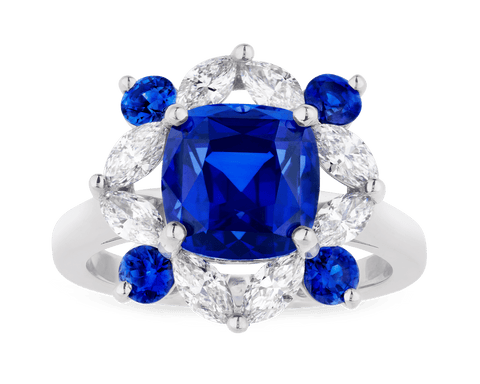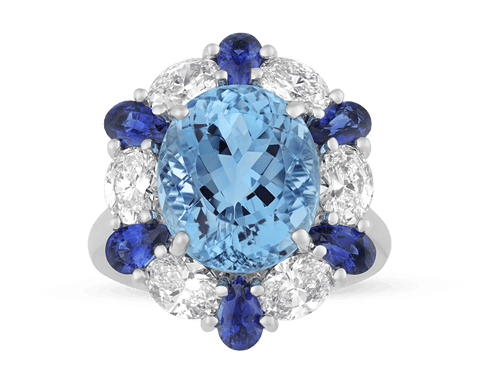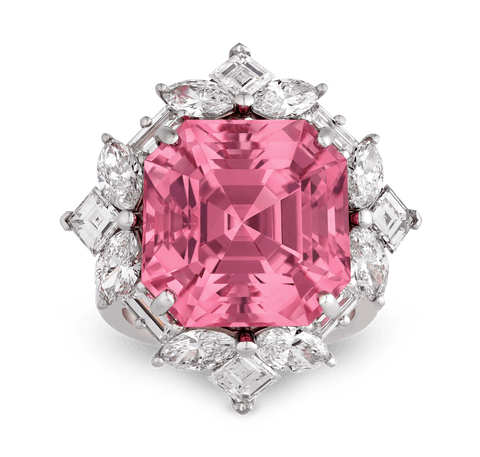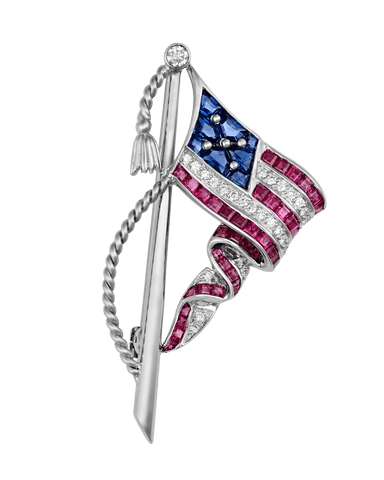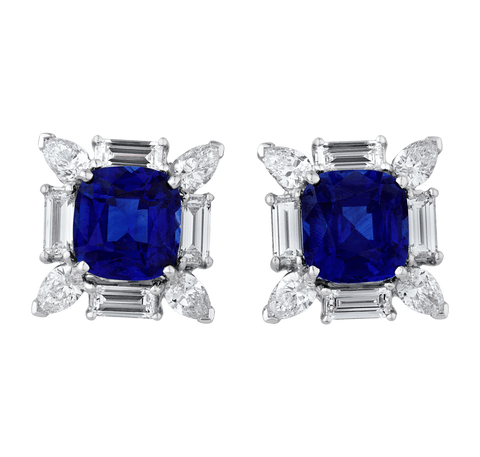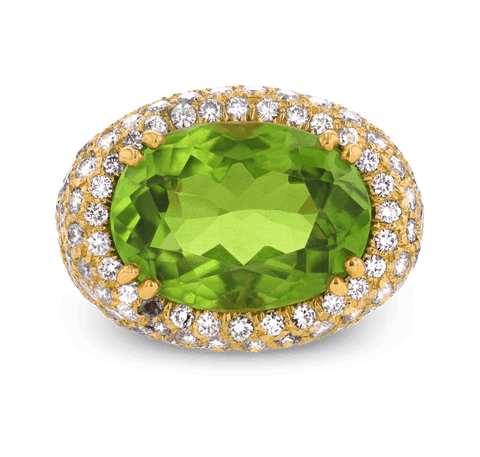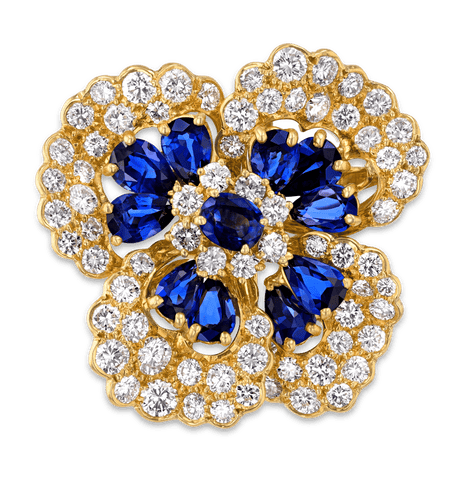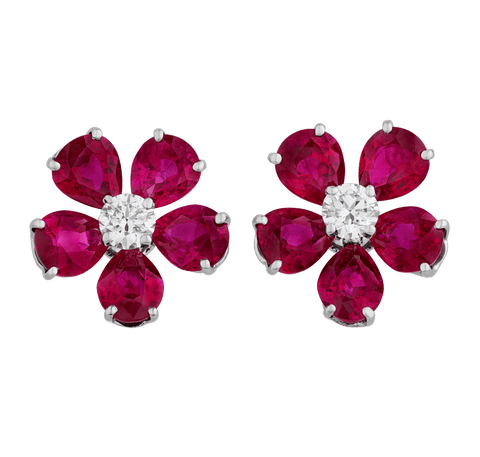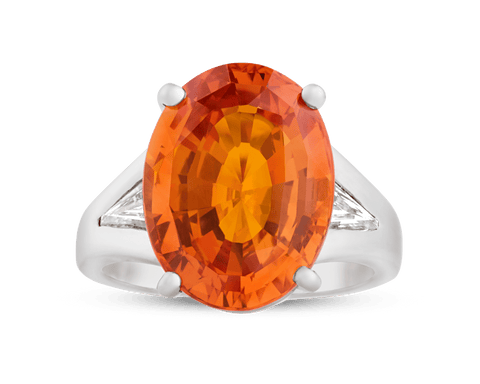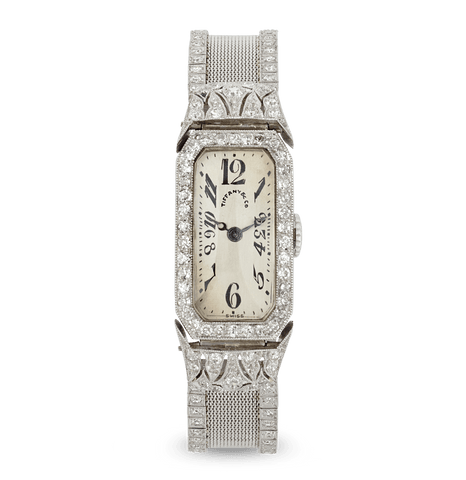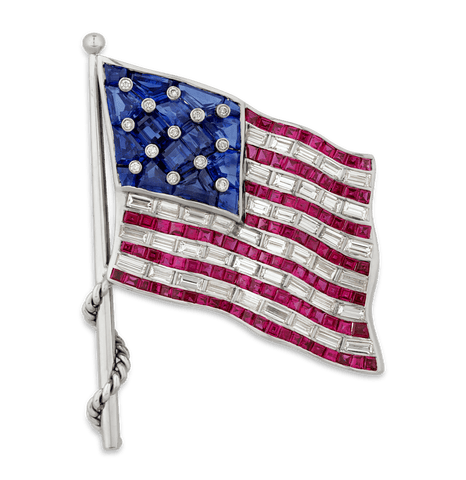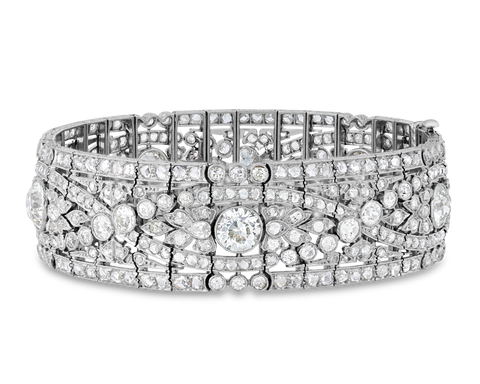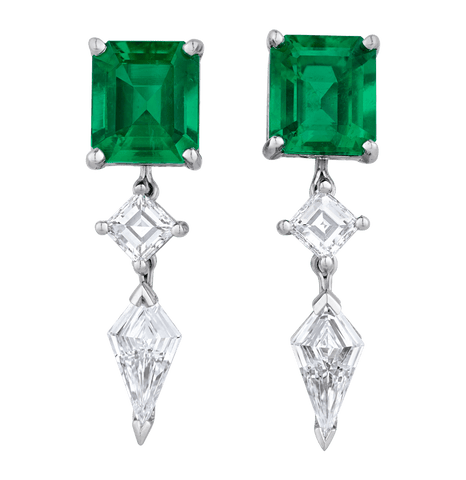Artists & Artisans
Heyman, Oscar
Oscar Heyman has been a driving force in fine jewelry for more than a century, known across the industry as “The Jewelers’ Jeweler.” The renowned American firm earned this moniker for their use of the rarest and most brilliant gemstones—including Paraiba tourmalines, moonstones, colored sapphires and cat’s eye chrysoberyls—as well as their painstaking attention to detail and flawless production.
The Formative Years
Oscar Heyman was born in Latvia in 1888. After a brief stint working in Ukraine in his uncle’s jewelry factory, the teenage Oscar and his brother Nathan immigrated to New York in 1906, where their brother Harry later joined them in 1907. Oscar soon found work as a jeweler—notably becoming the first non-French jeweler to be employed by Cartier—and Nathan became a machinist with Western Electric. Both were adept at working with platinum, a relatively new material at the time. This combination of skills, along with their talent and industriousness, would form the foundation of one of the most successful jewelry houses in American history.In 1912, the three brothers started their own jewelry company, Oscar Heyman & Brothers, with all but one of their other six siblings coming to New York to work for the company. The latter part of this decade would be a significant period of growth and innovation for the company. During this time, Oscar was granted the first of six patents, and their patriotic jewelry designs proved extremely popular during World War I. Their first American Flag brooch designed for Black, Starr & Frost was incredibly successful, and it remains a popular design to this day.
1920s-30s
The early 1920s saw significant changes for Oscar Heyman & Brothers. They moved their shop to 71 Nassau Street in 1920 and two years later relocated to 58 West 40th Street, near 5th Avenue. Heyman produced countless remarkable Art Deco creations during this era, one of the most famous and fabulous being a 60.00-carat carved emerald and diamond brooch for Marcus & Co., owned by Marjorie Merriweather Post, socialite and owner of General Foods, now belonging to the Museum of Fine Arts, Boston. They patented their die-stamp machine process and began sourcing high-quality gems when Nathan Heyman negotiated a deal with a Colombian emerald mine.Toward the end of the 1920s, they were awarded several other patents, including for a platinum bracelet link design that increased the strength of the clasp and for “invisibly set” jewelry, where stones are mounted on a metal track that cannot be seen from the top or sides, an innovative version of Van Cleep & Arpels’ mystery setting.
In these early days, Oscar Heyman & Brothers did not have any retail storefronts, instead producing bespoke designs for other high-profile firms. Still, the extent of their scope, influence and importance came to light at the 1939 World’s Fair. Five jewelers exhibited in the fair’s “House of Jewels” section—Cartier, Udall & Ballou, Tiffany & Co., Black, Starr & Frost-Gorham and Marcus & Co. Oscar Heyman & Brothers produced the jewelry on display for every company except Tiffany & Co., thereby earning them the enduring designation of “The Jewelers’ Jeweler.”
Patriotism in the 1940s
As World War II progressed, the company pivoted to meet the needs of wartime production, offering its factory to companies such as General Electric and Kodak to ensure the country’s production needs were met. In addition to other restrictions, gems were difficult to source during this time, and platinum was reserved for military use. Thus, the factory’s primary output was devoted to manufacturing jewel bearings to incorporate into watches, compasses and airplane instruments. Despite the social and economic turmoil of the global war, Oscar Heyman & Brothers still produced some of the finest patriotic jewelry of the era and began working with Neiman Marcus, who remains a current partner. Shortly after WWII, George Heyman started traveling the world looking for the rarest, most beautiful and colorful gemstones he could find, a process that continues for the company today.1950s-60s
In the mid-century, floral brooches became a mainstay of the firm, and in the 1950s, they added the “ballerina ring” to their repertoire, both remaining top sellers. The original ballerina ring is an 11.20-carat untreated round star sapphire surrounded by 28 tapered diamond baguettes that now resides in the Museum of Fine Arts, Boston. In 1959, the firm saw its first Hollywood collaboration, when through the company Leykin et Cie, they provided all the jewelry for the Lana Turner film, Imitation of Life. The necklace worn by Lana Turner in the film was designed by longtime Heyman employee Henry Rogers, and it featured baguette, square, round, half-moon and marquise diamonds, as well as yellow and brown diamonds. This collaboration with Hollywood opened the door for many more important commissions throughout the years.During the 1960s, George Heyman, the youngest brother, was appointed to succeed Oscar and the next generation took the helm. Though the 1964 World’s Fair did not have a dedicated jewelry pavilion, Heyman partnered with the Linde Star Corporation to create a commemorative necklace for the event.
Another celebrity icon, Elizabeth Taylor, had several fine examples of Oscar Heyman & Bros. creations in her collection. Famously, in 1969, Cartier entrusted Heyman with a commission to design and produce the setting for the legendary Taylor-Burton Diamond, an incredible 69.42-carat internally flawless diamond purchased by Taylor’s then-husband, film star Richard Burton. Heyman accomplished this project on an extremely tight deadline to great acclaim, creating a lavish pendant setting within a week. Adam Heyman recalls that the ideas were sketched in two hours, and “working day and night, the jeweler found 62 perfectly matched diamonds and finished the necklace. On the seventh day, we rested.” Taylor debuted the stunning creation at Princess Grace of Monaco’s Scorpion Ball.
1970s-80s
Oscar Heyman passed away in 1970, and George Heyman became president of the firm, as accolades continued to mount for the company. A 1971 commission from the Society of the Cincinnati to create a replica of the badge of their historic Diamond Eagle insignia crafted in Paris in 1787 was judged to be equal to the original. In 1972, the firm also boldly went where no jeweler had gone before when the crew of Apollo 16 wore bespoke medallions designed by Heyman. Vintage Oscar Heyman & Brothers jewelry also began appearing at auctions during this time, increasing the company’s name recognition with the public.The 1980s saw inroads into other continents, opening offices in Japan. Throughout this period of expansion, the company remained true to its roots, making every piece of jewelry in-house and by hand. Everything, including clasps and earring backs, was handmade, in addition to sourcing only the brightest, most colorful and exquisite gemstones from around the world. It was this meticulous attention to detail and craftsmanship that set Oscar Heyman apart during this period, and this same diligence continues to this day.
1990s to today
Oscar Heyman jewelry continues to rise in popularity, leading the way with innovative, contemporary designs while still adhering to the same rigorous standards and painstaking precision they’ve maintained throughout their history. For their 100th anniversary in 2012, Oscar Heyman & Brothers simplified its name to Oscar Heyman, and a fancy intense pink diamond ring crafted by the firm and owned by the late philanthropist Evelyn Lauder sold for over $8 million at Sotheby’s. Today, Oscar Heyman jewelry is worn by celebrities including Tina Fey and Billy Porter. Currently led by George Heyman’s son Adam, the company is in its third generation of family ownership and has built an incredible legacy from the world’s most beautiful jewels.Artists & Artisans
Heyman, Oscar
Oscar Heyman has been a driving force in fine jewelry for more than a century, known across the industry as “The Jewelers’ Jeweler.” The renowned American firm earned this moniker for their use of the rarest and most brilliant gemstones—including Paraiba tourmalines, moonstones, colored sapphires and cat’s eye chrysoberyls—as well as their painstaking attention to detail and flawless production.
The Formative Years
Oscar Heyman was born in Latvia in 1888. After a brief stint working in Ukraine in his uncle’s jewelry factory, the teenage Oscar and his brother Nathan immigrated to New York in 1906, where their brother Harry later joined them in 1907. Oscar soon found work as a jeweler—notably becoming the first non-French jeweler to be employed by Cartier—and Nathan became a machinist with Western Electric. Both were adept at working with platinum, a relatively new material at the time. This combination of skills, along with their talent and industriousness, would form the foundation of one of the most successful jewelry houses in American history.In 1912, the three brothers started their own jewelry company, Oscar Heyman & Brothers, with all but one of their other six siblings coming to New York to work for the company. The latter part of this decade would be a significant period of growth and innovation for the company. During this time, Oscar was granted the first of six patents, and their patriotic jewelry designs proved extremely popular during World War I. Their first American Flag brooch designed for Black, Starr & Frost was incredibly successful, and it remains a popular design to this day.
1920s-30s
The early 1920s saw significant changes for Oscar Heyman & Brothers. They moved their shop to 71 Nassau Street in 1920 and two years later relocated to 58 West 40th Street, near 5th Avenue. Heyman produced countless remarkable Art Deco creations during this era, one of the most famous and fabulous being a 60.00-carat carved emerald and diamond brooch for Marcus & Co., owned by Marjorie Merriweather Post, socialite and owner of General Foods, now belonging to the Museum of Fine Arts, Boston. They patented their die-stamp machine process and began sourcing high-quality gems when Nathan Heyman negotiated a deal with a Colombian emerald mine.Toward the end of the 1920s, they were awarded several other patents, including for a platinum bracelet link design that increased the strength of the clasp and for “invisibly set” jewelry, where stones are mounted on a metal track that cannot be seen from the top or sides, an innovative version of Van Cleep & Arpels’ mystery setting.
In these early days, Oscar Heyman & Brothers did not have any retail storefronts, instead producing bespoke designs for other high-profile firms. Still, the extent of their scope, influence and importance came to light at the 1939 World’s Fair. Five jewelers exhibited in the fair’s “House of Jewels” section—Cartier, Udall & Ballou, Tiffany & Co., Black, Starr & Frost-Gorham and Marcus & Co. Oscar Heyman & Brothers produced the jewelry on display for every company except Tiffany & Co., thereby earning them the enduring designation of “The Jewelers’ Jeweler.”
Patriotism in the 1940s
As World War II progressed, the company pivoted to meet the needs of wartime production, offering its factory to companies such as General Electric and Kodak to ensure the country’s production needs were met. In addition to other restrictions, gems were difficult to source during this time, and platinum was reserved for military use. Thus, the factory’s primary output was devoted to manufacturing jewel bearings to incorporate into watches, compasses and airplane instruments. Despite the social and economic turmoil of the global war, Oscar Heyman & Brothers still produced some of the finest patriotic jewelry of the era and began working with Neiman Marcus, who remains a current partner. Shortly after WWII, George Heyman started traveling the world looking for the rarest, most beautiful and colorful gemstones he could find, a process that continues for the company today.1950s-60s
In the mid-century, floral brooches became a mainstay of the firm, and in the 1950s, they added the “ballerina ring” to their repertoire, both remaining top sellers. The original ballerina ring is an 11.20-carat untreated round star sapphire surrounded by 28 tapered diamond baguettes that now resides in the Museum of Fine Arts, Boston. In 1959, the firm saw its first Hollywood collaboration, when through the company Leykin et Cie, they provided all the jewelry for the Lana Turner film, Imitation of Life. The necklace worn by Lana Turner in the film was designed by longtime Heyman employee Henry Rogers, and it featured baguette, square, round, half-moon and marquise diamonds, as well as yellow and brown diamonds. This collaboration with Hollywood opened the door for many more important commissions throughout the years.During the 1960s, George Heyman, the youngest brother, was appointed to succeed Oscar and the next generation took the helm. Though the 1964 World’s Fair did not have a dedicated jewelry pavilion, Heyman partnered with the Linde Star Corporation to create a commemorative necklace for the event.
Another celebrity icon, Elizabeth Taylor, had several fine examples of Oscar Heyman & Bros. creations in her collection. Famously, in 1969, Cartier entrusted Heyman with a commission to design and produce the setting for the legendary Taylor-Burton Diamond, an incredible 69.42-carat internally flawless diamond purchased by Taylor’s then-husband, film star Richard Burton. Heyman accomplished this project on an extremely tight deadline to great acclaim, creating a lavish pendant setting within a week. Adam Heyman recalls that the ideas were sketched in two hours, and “working day and night, the jeweler found 62 perfectly matched diamonds and finished the necklace. On the seventh day, we rested.” Taylor debuted the stunning creation at Princess Grace of Monaco’s Scorpion Ball.
1970s-80s
Oscar Heyman passed away in 1970, and George Heyman became president of the firm, as accolades continued to mount for the company. A 1971 commission from the Society of the Cincinnati to create a replica of the badge of their historic Diamond Eagle insignia crafted in Paris in 1787 was judged to be equal to the original. In 1972, the firm also boldly went where no jeweler had gone before when the crew of Apollo 16 wore bespoke medallions designed by Heyman. Vintage Oscar Heyman & Brothers jewelry also began appearing at auctions during this time, increasing the company’s name recognition with the public.The 1980s saw inroads into other continents, opening offices in Japan. Throughout this period of expansion, the company remained true to its roots, making every piece of jewelry in-house and by hand. Everything, including clasps and earring backs, was handmade, in addition to sourcing only the brightest, most colorful and exquisite gemstones from around the world. It was this meticulous attention to detail and craftsmanship that set Oscar Heyman apart during this period, and this same diligence continues to this day.
